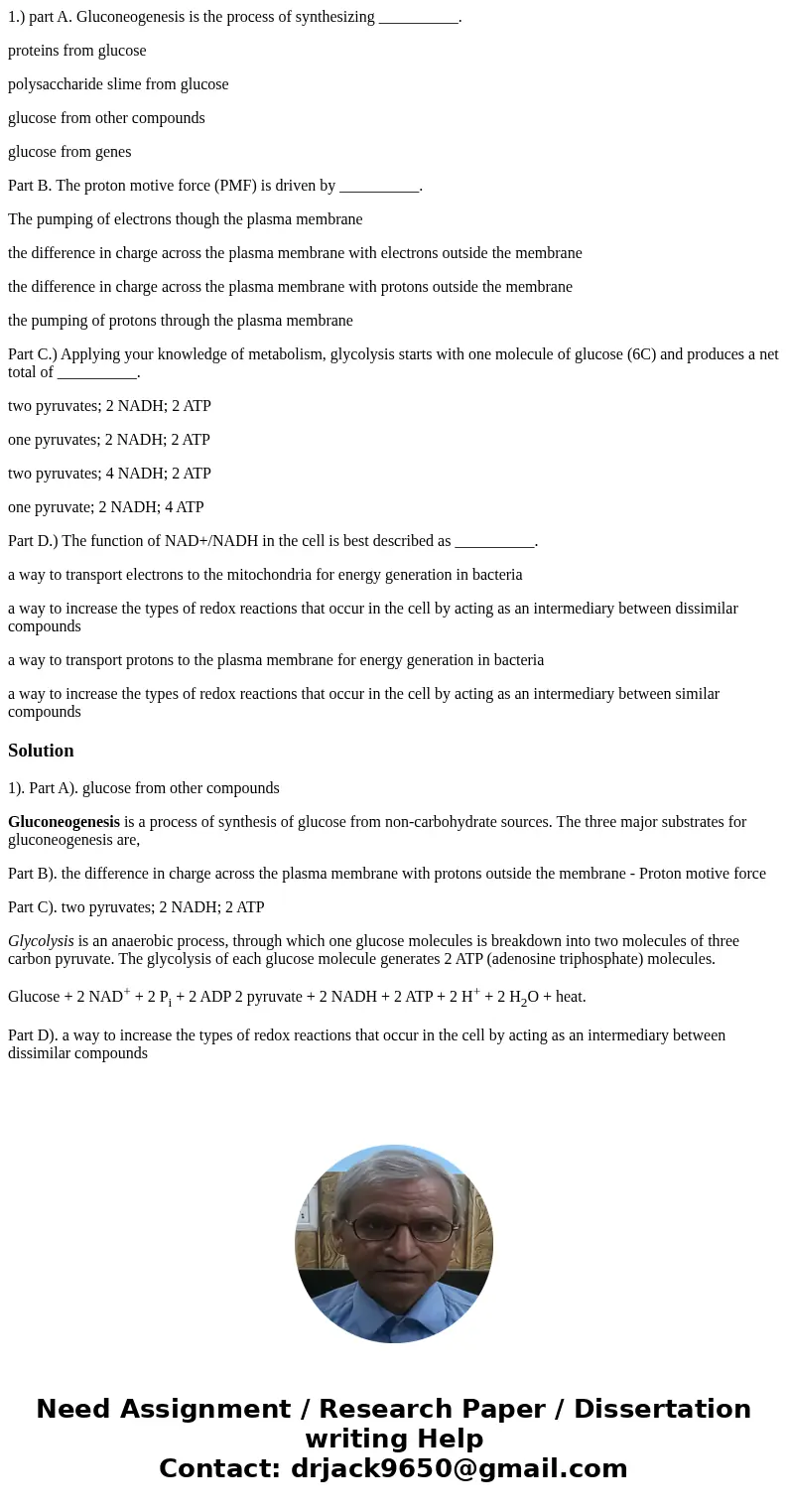1 part A Gluconeogenesis is the process of synthesizing pro
1.) part A. Gluconeogenesis is the process of synthesizing __________.
proteins from glucose
polysaccharide slime from glucose
glucose from other compounds
glucose from genes
Part B. The proton motive force (PMF) is driven by __________.
The pumping of electrons though the plasma membrane
the difference in charge across the plasma membrane with electrons outside the membrane
the difference in charge across the plasma membrane with protons outside the membrane
the pumping of protons through the plasma membrane
Part C.) Applying your knowledge of metabolism, glycolysis starts with one molecule of glucose (6C) and produces a net total of __________.
two pyruvates; 2 NADH; 2 ATP
one pyruvates; 2 NADH; 2 ATP
two pyruvates; 4 NADH; 2 ATP
one pyruvate; 2 NADH; 4 ATP
Part D.) The function of NAD+/NADH in the cell is best described as __________.
a way to transport electrons to the mitochondria for energy generation in bacteria
a way to increase the types of redox reactions that occur in the cell by acting as an intermediary between dissimilar compounds
a way to transport protons to the plasma membrane for energy generation in bacteria
a way to increase the types of redox reactions that occur in the cell by acting as an intermediary between similar compounds
Solution
1). Part A). glucose from other compounds
Gluconeogenesis is a process of synthesis of glucose from non-carbohydrate sources. The three major substrates for gluconeogenesis are,
Part B). the difference in charge across the plasma membrane with protons outside the membrane - Proton motive force
Part C). two pyruvates; 2 NADH; 2 ATP
Glycolysis is an anaerobic process, through which one glucose molecules is breakdown into two molecules of three carbon pyruvate. The glycolysis of each glucose molecule generates 2 ATP (adenosine triphosphate) molecules.
Glucose + 2 NAD+ + 2 Pi + 2 ADP 2 pyruvate + 2 NADH + 2 ATP + 2 H+ + 2 H2O + heat.
Part D). a way to increase the types of redox reactions that occur in the cell by acting as an intermediary between dissimilar compounds

 Homework Sourse
Homework Sourse